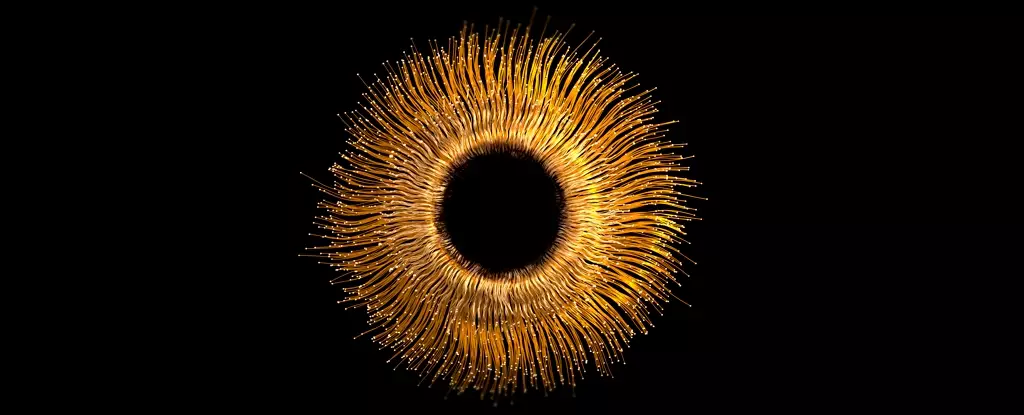The realm of medical advancements often parades remarkable discoveries that leave us in awe. Yet, few innovations spark intrigue quite like the recent findings surrounding the use of gold nanoparticles in treating age-related macular degeneration (AMD). For a condition that affects millions globally, predominantly the elderly, this breakthrough offers a glimmer of hope in what has been a dismal landscape of treatments. Traditional methodologies have focused primarily on staving off further degeneration rather than reversing the damage—a reality that can feel unbearably bleak for those affected. However, a new study suggests that the shimmering allure of gold dust could unlock revolutionary pathways to restore vision.
Understanding the Impact of Macular Degeneration
AMD is a relentless adversary, targeting the macula within our retinas, leading to significant visual impairments. The condition’s prevalence in the aging population raises pressing concerns about quality of life, independence, and mental well-being. The blurred vision, central to AMD, can turn mundane activities into daily struggles, fracturing people’s connection with the world. In an age where innovation should challenge the status quo, this nascent therapy stakes a claim for a shift in treatment paradigms. The ability to restore vision lost not through intricate surgeries or genetic manipulation, but via the application of minuscule gold particles is captivating.
The Mechanics of the Gold Particle Therapy
Led by biomedical engineer Jiarui Nie from Brown University, the mechanics of this breakthrough are mesmerizing. The treatment employs nanoparticles which are thousands of times thinner than a human hair, cunningly laced with antibodies designed to target damaged eye cells. When introduced into the vitreous chamber—the gel-filled space between the lens and retina—these particles are activated by an infrared laser designed to mimic the actions of natural photoreceptors. This meticulous process paves the way for potentially bypassing the damaged cells, rekindling the visual pathways crucial to sight. The prospect of donning a simple pair of glasses equipped with a laser adds an exciting layer of accessibility that traditional treatments lack.
Preliminary Findings: Pushing the Boundaries of Scientific Exploration
The animal studies conducted thus far illustrate a promising horizon, as engineered mice with retinal disorders experienced partial restoration of vision. While full-scale human trials remain on the distant horizon, the initial success serves as a beacon in the murky waters of eye disease treatment. The prospect of nanoparticles remaining in the retina without significant toxicity is particularly encouraging, suggesting that future applications may indeed be within reach. The dream of simultaneously broadening the field of vision while eliminating the invasive nature of previous treatments feels tantalizingly close.
Transformative Potential in Light of Caution
However, the road ahead is fraught with challenges, as the complexities of transitioning findings from laboratory animals to humans cannot be understated. Regulatory scrutiny will loom large; thorough testing is paramount before this treatment can claim its place within the arsenal against AMD. Yet, amidst this cautious optimism lies a revolutionary push against the dogmas long accepted in ophthalmological medicine. Not only does this research shed light on AMD, but it also opens doors to addressing other retinal degenerative conditions, presenting a landscape where science’s pace can outstrip despair.
A Paradigm Shift in Eye Health
As we contemplate the implications of such groundbreaking advances, we must recognize that empathy must accompany innovation in healthcare. The burden of vision impairment is profound, and society must ensure that treatments like these eliminate existing disparities in access to care. The allure of gold nanoparticles symbolizes more than just new treatment; it is a statement against stagnation in medical progress, urging us to invest in the potential that technology holds for humanity. This innovative therapy doesn’t just speak to scientific prowess; it shouts a call to action for the compassionate integration of new medical breakthroughs into the lives of the most affected.
Ultimately, the investigation of gold dust in the eye remains just that—a study in its infancy, yet potentially destined to evolve into a transformative therapy that shifts how we perceive age-related vision loss. In a world where we must remain vigilant against the inevitability of aging, this research encourages optimism, urging us to remain steadfast in our belief that, even amidst despair, science continues to illuminate the path to redemption.

